Victoria Sadler's Blog, page 10
May 17, 2015
Theatre Review: Death of a Salesman, RSC 'Superb, Extraordinary'
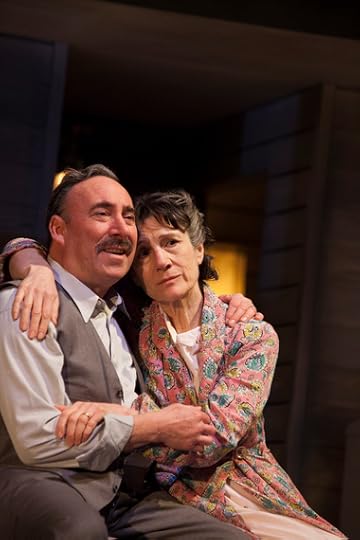
Death of a Salesman is a beautiful play and The RSC version, now transferred to the West End, is a beautiful production that shows this Arthur Miller classic at its very best.
Arthur Miller's Willy Loman is a broken man - though he won't admit it. Past his prime, he never achieved the success he so craved and now lives a desperate life, masking his failures and increasing debts from his wife and estranged sons, keeping up appearances whilst a dark and foreboding depression weighs ever heavier on his mind.
Antony Sher stars as Willy Loman, the tragic embodiment of the post-war boom in America where if you aren't selling, you aren't winning. And modern America is no place for losers.
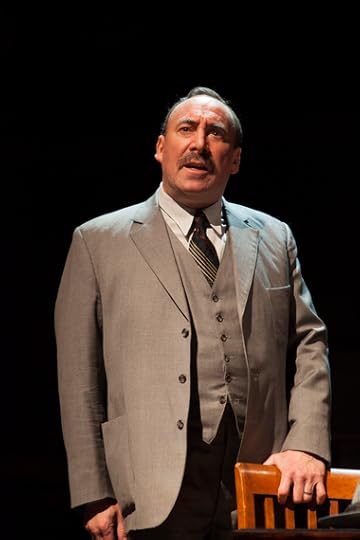
The contrasts that Antony Sher brings out in his performance are wonderful - preserving the remnants of this tough man, full of bravado and ambition, whilst allowing the darkness to increasingly show itself in Willy's behaviour.
He is supported by a wonderfully spirited performance from Harriet Walter (she's just always amazing) as Willy's wife, Linda. In the hands of Harriet, Linda is a strong woman with broad shoulders who has carried the weight of her family on her shoulders for decades, welding it together.
She is not broken by her husband, though under no illusions about what is happening to him. But her husband has kept secrets from her, secrets that only their son Biff (Alex Hassell) knows.
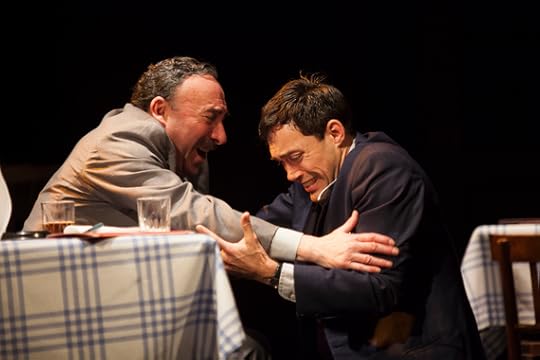
Alex Hassell continues to impress. He shone as Prince Hal opposite Antony Sher's Falstaff in Henry IV and again here he shows a brilliant ability to convey internal conflict as Biff, the disillusioned and angry son desperate to finally confront his father yet fearful of the consequences.
Together, their portrayal of a family caught up in a tangled web of secrets, lies and deceit is quite brilliant. And that all of this is caused by Willy's simple desire to get ahead, to achieve the American dream, is what makes Arthur Miller's play such a painful tragedy.
The direction comes from RSC's Artistic Director, Gregory Doran, and it's so well balanced, giving the piece that terrible tragic blend of desperation, defiance and defeat. There are passages of intense high drama and angst, and these contrast with moments of humour and quite heart-breaking tragedy.
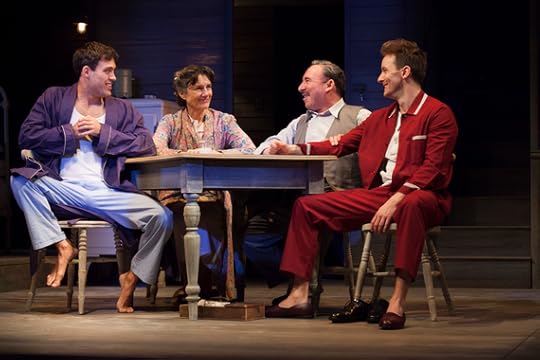
Gregory also shows a deft touch in the depiction of the porous walls in Willy's mind as he slips continually between fantasy and reality. The segues are so smooth, so effortless, and bring out all the sadness and heartbreak of a man unable to confront the fact that he has failed to achieve all that he had hoped for.
That Arthur Miller's masterpiece can still pack such a powerful punch is a testament to the fantastic writing, but this production from The RSC shows it at its very best. A superb production of an extraordinary play.
Noel Coward Theatre, London to July 18, 2015
Image Credits:
1.Antony Sher (Willy Loman) and Harriet Walter (Linda Loman), Death of a Salesman, 2015. Photo by Ellie Kurttz © RSC
2.Antony Sher (Willy Loman), Death of a Salesman, 2015. Photo by Ellie Kurttz © RSC
3.L-R - Antony Sher (Willy Loman) and Alex Hassell (Biff), Death of a Salesman, 2015. Photo by Ellie Kurttz © RSC
4.L-R - Alex Hassell (Biff), Harriet Walter (Linda Loman), Antony Sher (Willy Loman) and Sam Marks (Happy), Death of a Salesman, 2015. Photo by Ellie Kurttz © RSC
Published on May 17, 2015 10:51
May 10, 2015
Review: Kristin Scott Thomas in 'The Audience', Apollo Theatre
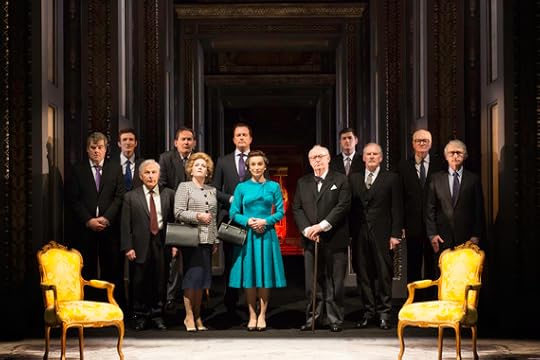
Weekly, the Queen meets with the Prime Minister for a private audience. The meeting is not minuted and not witnessed by anyone else. It is a private conversation and a convention the Queen has kept to for the entire length of her reign - a reign that has so far seen 13 Prime Ministers.
This play from Peter Morgan and directed by Stephen Daldry reimagines these private meetings, using them to not only entertain but to consider the role of the monarchy itself, and the challenges of reigning without ever ruling.
The play initially opened back in 2013 with Helen Mirren as the Queen. It was very popular then too and it remains pleasant and engaging but almost nothing has changed from this production, in style or content, other than the casting.
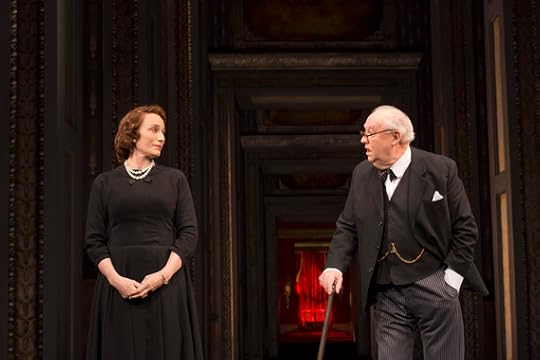
The costumes are the same, as are the impressive quick-fire on-stage costume changes that cause ripples of admiration across the auditorium. The set is much the same. Even the stage directions are identical. But whereas this show has not moved on, theatre and politics have. As a result, The Audience felt at times quite tired, as if it's is a show stuck in time.
Since the previous run in the West End, we've had other plays that have examined this subject matter of the delicate position the constitutional monarchy plays in our political lives. And both have arguably done it better. King Charles III went at the issue all hammer and tongs, whereas the glorious Handbagged, though a comedy, put the tricky power plays between Thatcher and the Queen under the microscope.
Helen Mirren is now on Broadway in this very show and her place in the West End has been taken by Kristin Scott Thomas. A fine actress yet for those of us who saw Helen Mirren it's impossible for us not to draw comparisons.
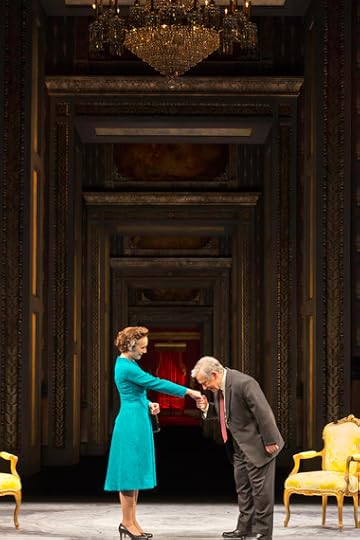
Kristin Scott Thomas brings out all the internal conflict of a woman who has committed herself to the service of her country, though that relationship can feel very one-sided at times. And obviously she has all the grace and elegance necessary. But the piece lacks Helen Mirren's spirited approach to the role. She had that twinkle in her eye, capturing the Queen's reputedly wicked humour. In comparison, KST is quite stern and distant.
Writer Peter Morgan though has made a few changes to the script to bring it up to date. I went to see the show on Friday May 8th, the first performance after the General Election and the cast had quickly learned a few new lines.
In her audience with David Cameron (superbly played by Mark Dexter who also played Cameron in the recent TV drama Coalition), the lines were changed to have an enthusiastic, beaming Cameron tell the Queen that he has a working majority. It was an admirable and perfectly executed last minute addition but the spontaneous cheers and applause from the clearly partisan audience that greeted Dave's declaration of victory chilled me to my core.
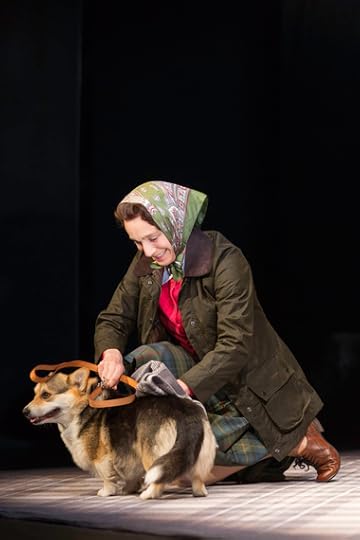
A sore reminder of my political bias, yes, but also a reminder that I am probably not the target audience for this show. If you like your theatre warm and supportive of the traditional institutions then you'll probably enjoy this show immensely. However if, like me, you prefer your theatre more risky, more challenging, then this show probably isn't for you either.
Apollo Theatre, London to July 25, 2015
Image Credits:
1. The Queen (Kristin Scott Thomas) with Prime Ministers in The Audience Photo credit Johan Persson
2. The Queen (Kristin Scott Thomas) and Winston Churchill (David Calder) in The Audience Photo by Johan Persson
3. The Queen (Kristin Scott Thomas) and Harold Wilson (Nicholas Woodeson) in The Audience Photo by Johan Persson
4. The Queen (Kristin Scott Thomas) in The Audience Photo by Johan Persson
Published on May 10, 2015 07:28
May 7, 2015
Review: The Angry Brigade, Bush Theatre - 'heady, intoxicating'
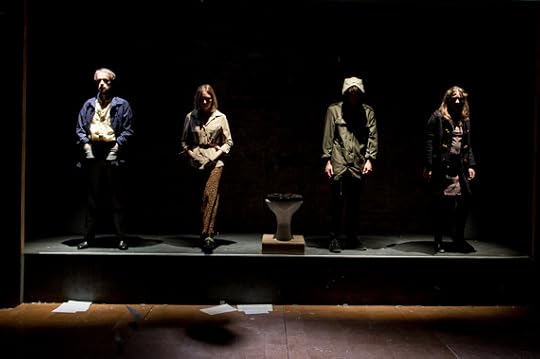
The Angry Brigade at Bush Theatre isn't subtle but it is energetic, powerful and brutally effective in punching its message across, that message being: look around you, people! This isn't freedom and we are not free!
The Angry Brigade were a group of anarchists in 1970s London who sent bombs to a number of high profile targets and this dramatization takes on two perspectives - the first half follows the specially commissioned squad at Scotland Yard tasked with identifying this group, and the second follows The Angry Brigade itself, the two men and two women in the group and the tangled web of personal relationships and power plays that bedevil their attempts to challenge the establishment.
This play bristles with anger and energy, whether it's the punk rock blaring out across the auditorium or the destructive meltdowns that see the set regularly overturned. (Quick mention to the sound design team here, headed by Tom Gibbons, who have done a fantastic job in contributing to the snarling atmosphere). This production just reeks of anarchy.
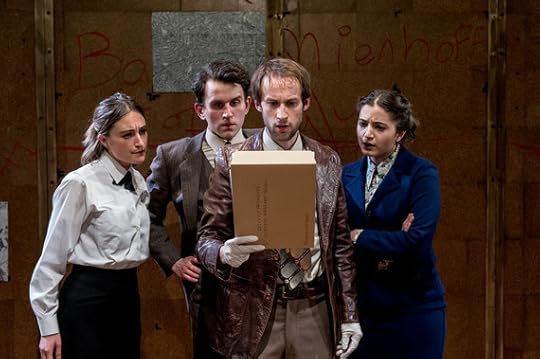
The piece is directed by James Grieve and the decision to use the same cast for both the police and the anarchists is a delicious one. It heightens the anguishing challenges facing the two halves of this story - the wavering conviction in the police as they unravel into anarchy themselves and, conversely, witnessing the anarchists come undone by the power structures within their own group, whether these are based on class, gender or education elitism. It's sobering and tragic.
The cast of four works hard to play both sides of the same coin and a stand-out performance comes from Pearl Chandra who succeeds wonderfully in bringing depth and an internal tension to both her roles as a WPC on the rise, and as a lovestruck and conflicted member of The Angry Brigade.
This piece needs anger, of course - that's the source of its energy. But the lack of subtlety in parts does cause some issues.

Not all the characters move beyond their clichés and some elements are overdone. For example, the Scotland Yard scenes see a lot of the humour hammed up and the drama hammered into melodrama. Such heavy touches swamp the deft writing - there's plenty of dry humour and drama in the text already. Ideally space would have been given just to let the lines land.
Similarly, the second half see a wonderful introduction of song and clever sidesteps into pop culture references. When it's done the first time, it's wonderful. The second and third time, still pretty clever. But by the time we get to the fifth and sixth, it has lost its lustre.
The writing comes from James Graham, who has been incredibly successful in dramatizing his passion for politics, with This House and Privacy being huge successes on the stage, and Coalition a popular television drama. Indeed, another new play from James on voting and elections, The Vote, has just opened at the Donmar.
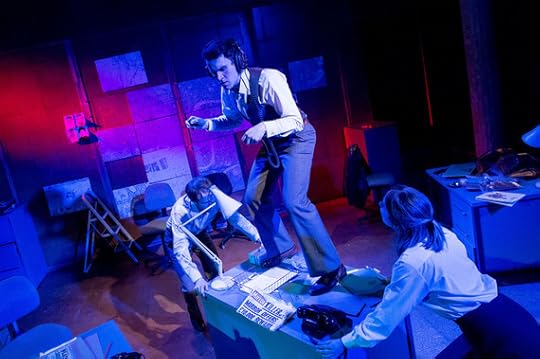
The Angry Brigade follows that passion perfectly and, much like This House, James uses the parallels between 1970s Britain, and its fragmented society and economy, to tell a timely story about power and exploitation.
However there were times when this play teeters over the edge and falls into preaching and teaching. For example, a section explaining that politics is a circle and not a linear spectrum came straight from a Politics A-level textbook.
Nevertheless, that this play wears its heart - and its politics - on its sleeve is a real plus. Its lack of apology for its challenge to the powerful in our society is necessary and as (frighteningly) relevant today as they were 40 years ago.
This play is heady, intoxicating and very, very angry. For me though, just taking the foot of the pedal in certain moments would have allowed that balance between anger and tragedy to be more delicately poised.
Bush Theatre, London to June 13, 2015
Image Credits:
1. Mark Arends, Lizzy Watts, Harry Melling and Pearl Chanda ©Manuel Harlan
2. Lizzy Watts, Harry Melling, Mark Arends and Pearl Chanda ©Manuel Harlan
3. Harry Melling and Mark Arends in The Angry Brigade ©Manuel Harlan
4. Mark Arends, Harry Melling and Lizzy Watts in The Angry Brigade ©Manuel Harlan
Published on May 07, 2015 14:38
April 29, 2015
Damian Lewis Stars in 'American Buffalo', Wyndham's Theatre

With Damian Lewis and John Goodman in the cast, this production of David Mamet's American Buffalo was always going to be a box-office success. However, whether all those who pile in to see this show will come out raving about it, I'm not so sure.
American Buffalo is a small story about three no-hopers and their desperate and desperately terrible plan to rob a valuable nickel. The production has some excellent acting performances but narrative drive is incredibly slight with the dialogue-heavy script far more focused on circular conversations than driving any story forward.
I, however, enjoyed this show - more than I expected to. And the principal reason for that is the acting, which really is top drawer.
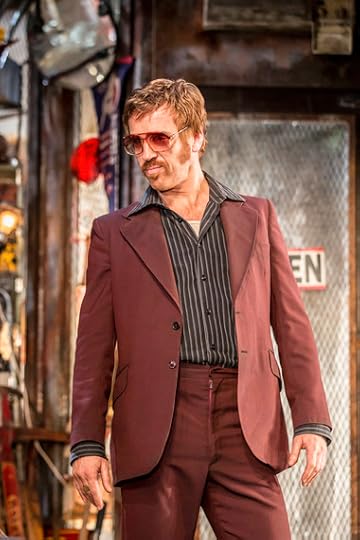
John Goodman is Don, a junk store owner who's smarting from underselling a valuable nickel - one with a Buffalo Indian on it - to a customer. He wants his coin back and has roped in Bobby (Tom Sturridge), a fractured, fragile junkie, to monitor the customer to enable a potential robbery.
Only local hustler Walter (Damian Lewis) hears about the plan and steps in, offering his more reliable services over Bobby's. And what transpires is the unravelling of what was already a terrible idea.
What attracts is that these are three very, very, very different characters. You can't imagine there being much that would bring these three men together other than the fact that they are all down on their luck and desperate. But the interplay between the actors is tremendous.
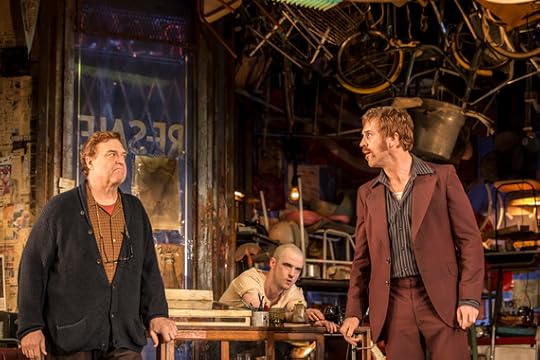
John Goodman and Damian Lewis bounce off each other with relish, really mining all of David Mamet's rich dialogue for all the humour and drama they can wring from it. Yet it's Tom Sturridge as Bobby who impresses most of all. His dependency both on drugs and Don are played beautifully and he is very much the heart and soul of the story. His is the character who seems most elusive, most difficult to pin down.
The set design from Paul Wills caused audible gasps from some in the audience when lights went down. Perhaps their response was a little OTT but it did reflect not just how many in the auditorium were not regular theatre-goers - a reminder on the draw of star-power on the West-End stage - but also how good the set really is.
American Buffalo is a single setting play that takes place in Don's junk shop. And the opportunity has been taken to really invest in a wondrous design with the whole stage filled, from ceiling to floor, with junk. Tons of junk, and all dirty, in disrepair and covered with dust.
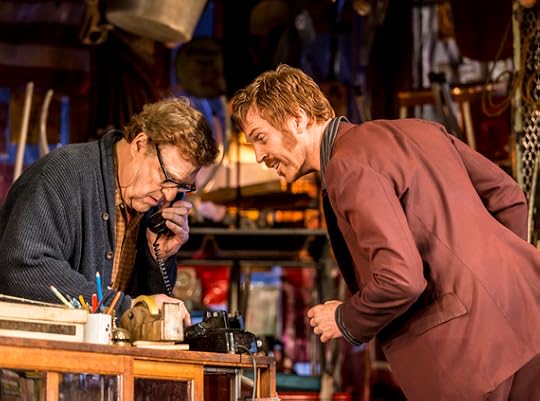
Direction comes from Daniel Evans and it's subtle and unobtrusive, the three characters ever coming and going from the junk store. Yet there is one big directorial decision that was made that intrigues.
Bobby's fragility is paired against Don's paternalistic affection for him, giving him a protection that plucks the heartstrings. I've not seen American Buffalo performed before but there is clearly another interpretation that could have been made - that there could be a sexual element that feeds Don's protection. The decision to shy away from that is a shame but nevertheless, the ending is still tender and moving and wraps up what is a surprisingly enjoyable production.
However whether this production will encourage many of those new theatre-goers drawn to this show for its stars to see more theatre, I don't know. I enjoyed this but there were plenty of murmurs from others leaving the audience that they didn't understand what it was about, thought Damian Lewis looked Tom Selleck and that there was way too much swearing. Oh well, horses for courses but that is the beauty of theatre - come again and try something else.
Wyndham's Theatre, London to June 27, 2015
Image Credits:
1. John Goodman (Don), Tom Sturridge (Bob) and Damian Lewis (Teach) in American Buffalo at Wyndham's Theatre. Credit Johan Persson
2. Damian Lewis (Teach) in American Buffalo at Wyndham's Theatre. Credit Johan Persson
3. John Goodman (Don), Tom Sturridge (Bob) and Damian Lewis (Teach) in American Buffalo at Wyndham's Theatre. Credit Johan Persson
4. John Goodman (Don) and Damian Lewis (Teach) in American Buffalo at Wyndham's Theatre. Credit Johan Persson
Published on April 29, 2015 12:40
April 24, 2015
Theatre Review: Golem, Trafalgar Studios 'A Dazzling Visual Feast'
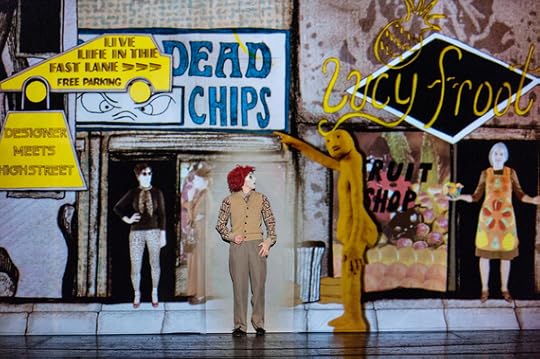
Golem is a dazzling visual feast with a biting social commentary that's enough to put a spring in the step of even the most jaded theatre-goer. In a show that fuses performance with animation, film and music, Golem challenges us to confront the lie that we've been sold - that technology will set us free.
What first grabs you about Golem is undoubtedly its quite stunning production design. A traditional stage setting has been thrown out and instead the actors perform in front of a blend of film and animation, in bold primary colours, projected onto the wall behind them. Mixed with its quirky characters, it's as if you're watching a cartoon brought to life.
The visuals are stunning, no doubt about it, but the story is engaging too. A moralistic tale about our technology addiction may not be radical but it is timely and it is pertinent, and 1927 have chosen a specific angle on this - that greater technological advancement won't give us greater leisure time but instead lead to ever greater work demands on us.
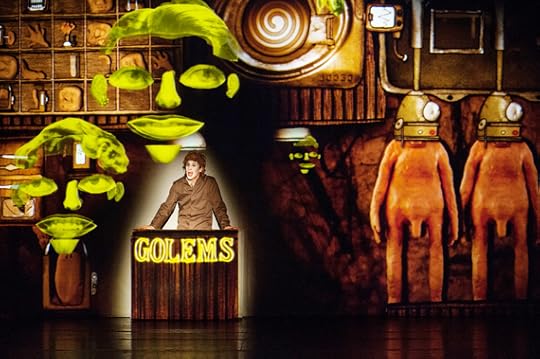
The plot is cleverly centred around Robert, an awkward and shy young man who spends his days working at a binary factory and his evenings playing keytar in his sister's politically revolutionary but performance shy punk-rock band, Annie and the Underdogs.
It's a pedestrian life going nowhere until Robert buys a Golem, a man made of clay that obeys his every command. It's a dream come true - at first. Golem's productivity at the binary factory makes Robert a star and he's a whizz at the domestic chores. But soon the line between commander and commanded start to blur as Golem's influence over the easily-led Robert starts to tell and Robert develops into a work-focused, promotion-grabbing, advancement-obsessive.
Golem is full of energy and wonderful elements. If it's not the humour, it's the animation; if it's not the sentimental love story then it's the music. This is a show that ticks so many boxes.
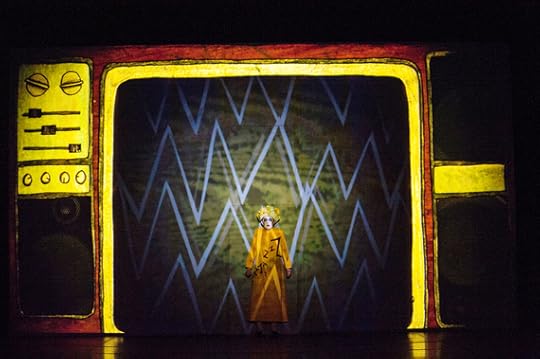
The play was written and directed by Suzanne Andrade and design was led by Paul Barritt but credit is due to the whole creative team at 1927. The five performers work their socks off playing a myriad of roles, including some of the instruments, all requiring a string of costume changes. But it all comes together so effortlessly.
The company, 1927, specialises in productions that combine performance and live music with animation and film yet this is the first of their shows that I have seen and I cannot wait to see what they do next.
This show was sensationally popular when it ran at the Young Vic Theatre last year and so it's a thrill that it has now been transferred to Trafalgar Studios. Golem is warm, witty and wickedly satirical. It deserves to be a success.
Trafalgar Studios, London to May 22, 2015
Image Credits:
1. Shamira Turner in 1927s Golem. Photo by Bernhard Müller.
2. Will Close in 1927s Golem. Photo by Bernhard Müller
3. Rose Robinson in 1927s Golem. Photo by Bernhard Müller.
Published on April 24, 2015 13:59
April 19, 2015
Exhibition Review: Sonia Delaunay, Tate Modern

The Tate has opened a wonderful new exhibition on Sonia Delaunay, the exciting avant-garde artist whose bright and colourful works spanned not just painting, but also textiles, fashion, theatre and design.
Sonia was a key figure in the Parisian avant-garde movement of the 20th century yet this is the first ever retrospective of her work here in the UK. And as you wander through the galleries, astounded not just by the quality in breadth but also in depth, you're left wondering not just how come this is the first retrospective, but why is it this artist is not more well-known as Sonia Delaunay is certainly not a household name.
Sonia made her name in Paris but she had travelled widely before she arrived in the French capital in 1906. She was born in Ukraine, then part of the Russian empire, before travelling to St Petersburg for school. She was eventually adopted by her wealthy uncle and travelled around Europe during her holidays. Her artistic talent became obvious so at 18, she moved to Germany to study art. And then on from there to Paris.
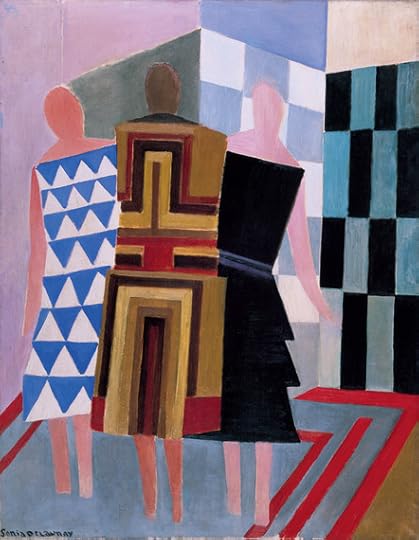
When she arrived in Paris, she was very much a figurative painter, already impressing with stunning works such as Yellow Nude, 1908, a stunning female nude provocatively posed but with a lurid yellow skin and citric pink cheeks, and Young Finnish Girl, 1907, a painting of topless adolescent girl, awkwardly posed with a deathly grey pallor to her body and a flushed face.
But Sonia's passion for art would drive her constant curiosity for new ideas, for experimenting with both technique and materials, so with her husband, artist Robert Delaunay, she developed Simultaneism - a fusion of abstract compositions with vibrant shapes and colours.
The works from this period are amongst the highlights of the show. Sonia's Electric Prisms, 1914, with its overlapping fragmented circles of reds, greens and blues, is her representation of new electric street lights on Boulevard Saint-Michel. And I loved Le Bul Bullier, 1913, a painting that represents tango dancers through curved brightly coloured shapes swirling across the canvas.

Sonia was fearless with innovation and development, both in society and artistically. She set up an atelier in Paris, Simultané, which produced fresh, contemporary designs for all kinds of accessories and costumes, not just for stars such as Gloria Swanson but also stage productions such as Diaghilev's Ballets Russes.
Sonia also embraced reflecting these new developments artistically and this exhibition includes Motor, Dashboard and Propeller, the vast murals she created for the 1937 International Exposition in Paris and never before shown in the UK.
Curator Juliet Bingham has done a terrific job of showcasing the extraordinary variety of Sonia's work. Her bright and vivid colour palette dominates the mosaics on the floor as much as the canvases on the walls. And Sonia's vibrant fabrics and wallpaper designs mix beautifully with the collages and bathing costumes, parasols and tapestries, even poetry embroidered onto blankets.
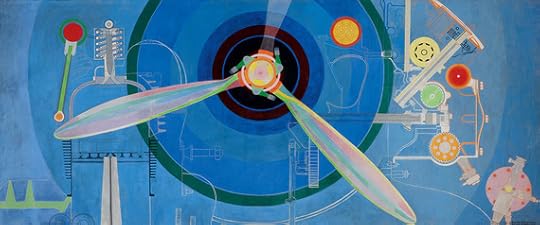
With its superb Marlene Dumas show in the other exhibition hall, the Tate Modern has given a significant platform to female artists and that should be applauded. But what should also be noted is that these two exhibitions are also amongst the best in town right now - and that is something that should not go overlooked by other galleries.
Tate Modern, London to August 9, 2015
Admission £14.50 (concessions available)
Image Credits:
1. Sonia Delaunay Yellow Nude 1908 Musée des Beaux-Arts de Nantes, Nantes © Pracusa 2014083
2. Sonia Delaunay Simultaneous Dresses (The three women) 1925 Museo Thyssen-Bornemisza, Madrid © Pracusa 2014083
3. Prismes electriques 1914 © Pracusa 2013057 © CNAP
4. Sonia Delaunay Propeller (Air Pavilion) 1937 Skissernas Museum, Lund, Sweden © Pracusa 2014083 Photo: Emma Krantz
Published on April 19, 2015 08:09
April 15, 2015
Roald Dahl's 'The Twits' Takes to the Stage

For a theatre that has been so focused on plays with a political message of late - Hope, God Bless the Child, Teh Internet is Serious Business, 2071 - the programming of a Roald Dahl adaptation at the Royal Court is an odd choice, especially during a General Election. Perhaps they were wishing for a runaway smash like Matilda. If so, they haven't made it.
There is a delicious darkness to Roald Dahl's original book about a vile and dirty couple who are rotten to the core. You relish their horrid plots and laugh at their wickedness. I desperately wanted this adaptation to capture that spirit but the result is not good, patchy at best.
Visually, The Twits is sumptuous. Chloe Lamford has recreated the Twits' grim home wonderfully, with its grubby kitchen and overgrown tangled garden.
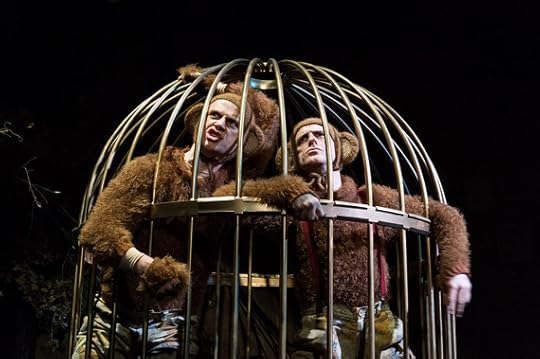
The impressive production design is complemented by some terrific performances from a cast that give it everything. Jason Watkins and Monica Dolan throw themselves into the roles of Mr and Mrs Twit. They are full of grisly pleasure, wringing every drop of enjoyment possible out of torturing their caged monkeys, unsuspecting passers-by and even each other.
However, director John Tiffany's decision to play this for laughs reduces the Twits to a more pantomime couple, more Punch and Judy. There's lots of smashing each other with pots and pans and rolling on the floor. Dahl's darkness gets lost in this attempt to lighten it up, and that's a mistake. Kids like being scared and they know when they're being patronised.
Glyn Pritchard, Cait Davis, Oliver Llewellyn-Jenkins and Aimee-Ffion Edwards also shine as the family of monkeys trapped inside their cage, forced to perform cruel sketches that needle at the deepest insecurities in their audience, whilst all the while plotting their escape from the clutches of The Twits.

In this adaptation from Enda Walsh, the monkeys become the heart of the show, its main characters. But there's just not enough to make you care as though there are some great ingredients, this show is missing the most crucial one of all - an engaging plot.
The flimsy story sees the Twits lure in a team of fairground workers with the promise of returning to them the fairground they swindled from them some time before. Implausibly these caravaners take up home in The Twits' back garden for the best part of a year waiting for this fairground, which they are perpetually promised is 'just up the road.' I mean, why don't they just leave?
And frankly if they are stupid enough to believe the Twits are going to give them their fairground back then they really do deserve their fate.
Only their dreadful fate seems to have been more inflicted on us, the audience. The two hour play is little more than a series of sketches. There's no forward momentum, little purpose and the whole piece just lacks any kind of narrative drive.
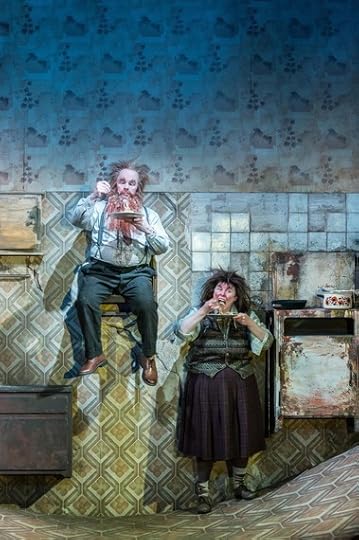
Again and again, the caravaners are forced to sit down in the corner whilst the Monkeys and the Twits put on shows, set up grisly Christmas lunches and serve up magpie pie. It just goes on and on and on without any discernible point.
It is numbing and quite disheartening to have such darkness watered down and served up so blandly. As a result, the play just drags and you find yourself willing the end to come. Such a shame. Read the book again instead.
Royal Court Theatre, London to May 31, 2015
Image Credits:
1. Jason Watkins (Mr Twit) and Monica Dolan (Mrs Twit), The Twits, Royal Court Theatre © Manuel Harlan
2. Oliver Llewellyn-Jenkins (Monkey Son) and Glyn Pritchard (Monkey Dad), The Twits, Royal Court Theatre © Manuel Harlan
3. Jason Watkins (Mr Twit) and Monica Dolan (Mrs Twit), The Twits, Royal Court Theatre © Manuel Harlan
4. Jason Watkins (Mr Twit) and Monica Dolan (Mrs Twit), The Twits, Royal Court Theatre © Manuel Harlan
Published on April 15, 2015 12:11
April 8, 2015
Exhibition Review: Churchill's Scientists, Science Museum

Winston Churchill was fascinated with science - he was the first Prime Minister to have a scientific adviser and encouraged resources to be pushed into science - and Churchill's Scientists, a fascinating new exhibition at the Science Museum, shows just how many scientific breakthroughs and ground-breaking discoveries were made during the War as a result of this support.
From radar to nutrition, from the atom to radar, this tardis-like exhibition covers an extraordinary breadth of innovations that demonstrates what a productive period this was. Necessity being the mother of invention, I suppose. But Churchill's fascination with science was unusual for his generation and helped define the role of science not just during the war but beyond.
The exhibition starts with the preliminaries. Churchill was determined to harness the potential of science and the Royal Society helped compile a register of 7000 scientists who could contribute to the war. Additionally Churchill hired Frederick Lindemann as his personal scientific advisor.
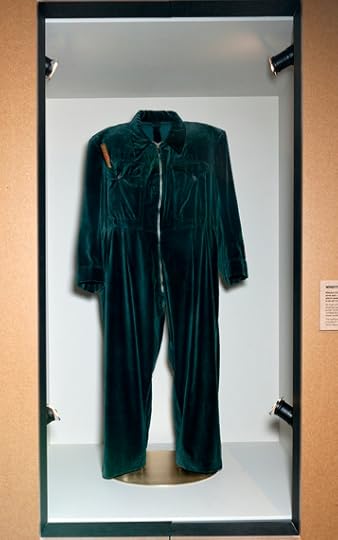
But the promotion of the man who became known as The Prof was not universally welcomed. The exhibition demonstrates the tension with British bomber command who referred to Lindemann's contribution as "a panacea by a civilian professor whose forte is the sexual aberrations of apes." Ouch! I guess there's office politics wherever you are.
But the dramatic videos in the exhibition of the sinking of British carriers by German U-boats showed just how necessary the contribution from these civilian scientists was.
Churchill admitted that the Battle of the Atlantic gave him more concern than the Battle of Britain but the breadth of solutions and innovations that came from this was challenge was extraordinary.
The success of cryptology and Bletchley Park are - thankfully - now pretty well known. The impact of their work on computer science was profound.
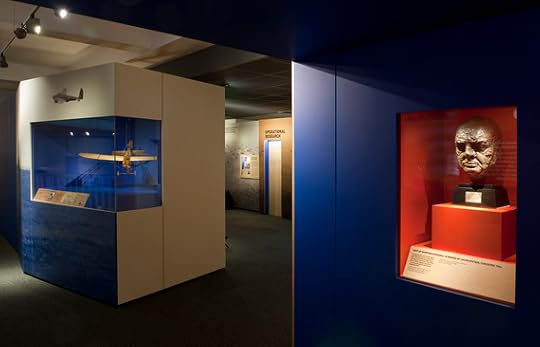
Similarly the development of radar during these years was rapid. The displays on Henry Tizard, who was crucial in pushing the radar programme forward, are fascinating. Fighters needed on-board radar sets and new electronic techniques to use high-frequency signals.
There is some great description of the Daventry experiments, which gave birth to radar, and wonderful testimony to the uniqueness of British radar developments, which was integrated into a complete defence system.
The Tube Alloys project - the project to separate uranium isotopes - remains probably the most controversial development form the War, and the exhibition does not shrink away from the devastation that the bomb project eventually caused.
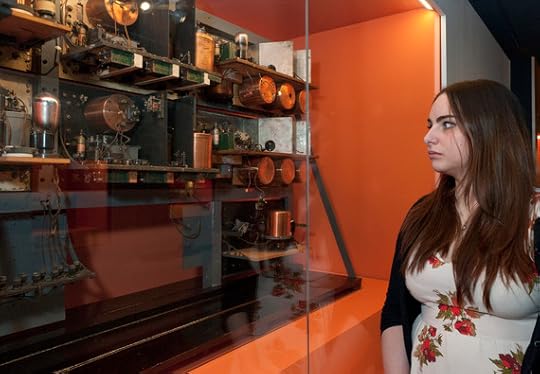
However it also shows how the separate British project became necessary as collaboration with the Americans withered away. And there's some interesting statistics on how nuclear power became harnessed for post-war domestic energy needs where, for a time, Britain led the world in proportion of electricity made from nuclear power.
But there was more to British scientific breakthroughs at this time than pushing for victory.
In 1941, penicillin was developed so it could be harnessed for human use, and Dorothy Hodgkin finally solved the structure of penicillin - on VE Day in 1945, to be exact.
Robert McCance and Elsie Widdowson investigated the potential effects of rationing on the British population and their work led to significant developments in the understanding of nutrition as well as calcium carbonate being added to bread.
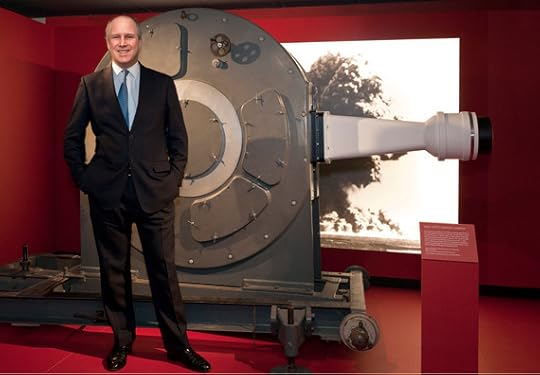
And the exhibition brings in the massive strides made in DNA structured identification and analysis, and even space discoveries, which I hadn't even considered could have come from the war effort - but they did.
This is a fascinating exhibition with some wonderful exhibits to really bring the science to life. The exhibition includes some footage and excerpts from Churchill's post-war speeches where he expressed his belief that post-war American prosperity was because pure science had been translated into industry.
Though he hoped for the same in the UK, it's questionable whether that was realised. The British contribution to pioneering scientific developments during the War is incredibly impressive and shows a hint of what, perhaps, this country could do again if the science community had similar support now.
Admission Free
Science Museum, London to March 1, 2016
Image Credits:
1. Entrance to the Churchill's Scientists exhibition © Science Museum
2. Winston Churchill's original green velvet siren suit © Science Museum
3. Gallery view of the Churchill's Scientists exhibition © Science Museum
4. Terri Dendy, Collections Information Officer, photographed with Robert Watson-Watt's original radar apparatus at the press preview of Churchill's Scientists © Science Museum
5. Randolph Churchill (Winston Churchill's great-grandson) photographed with the C4 Rotating Mirror High Speed Camera at the press preview of Churchill's Scientists © Science Museum
Published on April 08, 2015 11:58
April 3, 2015
Theatre Review: Oppenheimer, Vaudeville Theatre
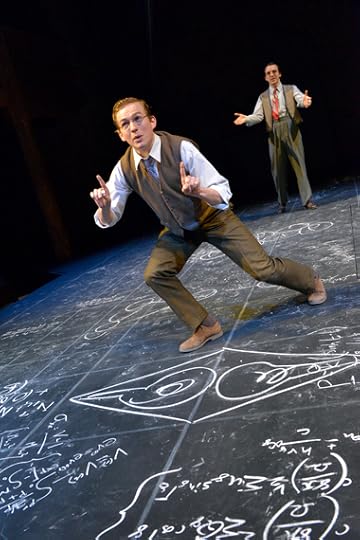
Oppenheimer is a powerful, intelligent, huge scope of a play that examines J. Robert Oppenheimer, the man at the centre of the Manhattan Project, and the professional and personal cost he paid to create the atomic bomb.
Set during the Second World War, writer Tom Morton-Smith and director Angus Jackson bring to life not just the man - "the father of the atomic bomb" - but the world in which he lived and worked.
Much like the powerful chemical reactions Oppenheimer is trying to create, this play fizzes with energy as it hurtles from one scene to the next. Private parties flow effortlessly into science lectures, and romantic clinches transform into scenes of tense office politics.
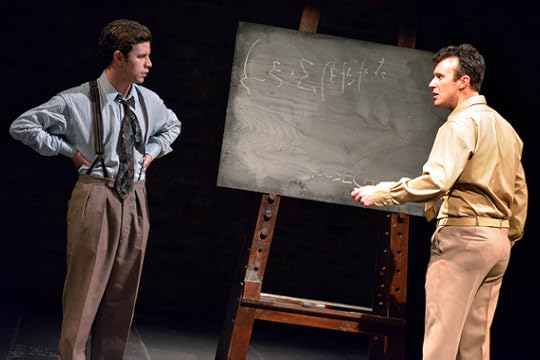
And the contradictions are fascinating - this esteemed elite bunch of privileged scientists at the heart of the story are all card-carrying communists working in and for capitalist America, and their passionate commitment to making the world a better place is going to see them create the most powerfully destructive force in the history of humanity.
It's frenetic and exciting but, of course, what is creeping up on you all the time is this wariness of the emotional distance this world of scientists have from reality. They are geniuses - smart, dynamic and ground-breaking - but the bubble they live and work in is making them increasingly remote from the society they are claiming to save - and to destroy.
At the heart of this play is an intriguing performance from John Heffernan whose J. Robert Oppenheimer is a complex, introverted and often contradictory man. A passionate principled man who suddenly throws away his communist ideals as soon as American funding comes knocking, and a man desperately looking for a woman to love him who pushes away any that try.
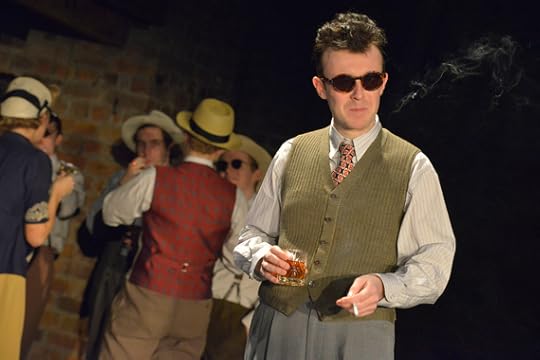
I love these contradictions, these complexities that writer Tom Morton-Smith has weaved into his story. The show is smart, challenging and thought-provoking but I do warn you, after three hours of such densely packed material, I did feel a little exhausted. Make sure you take a lot of caffeine beforehand - there's a lot of good stuff in here and you want to be able to take it all in!
I came away illuminated, for sure, but what I loved about most about Oppenheimer was its elusive heart. Even after three hours following almost every element of his work and his private life Oppenheimer is still a mystery - his motivations complex, his balance between compassion and vanity always unsteady.
Such ambiguity makes for a perfect conclusion, for much like his terrible creation that destroyed and saved so many lives, who's to know for sure whether Oppenheimer's motivations came from a good place or a bad one.
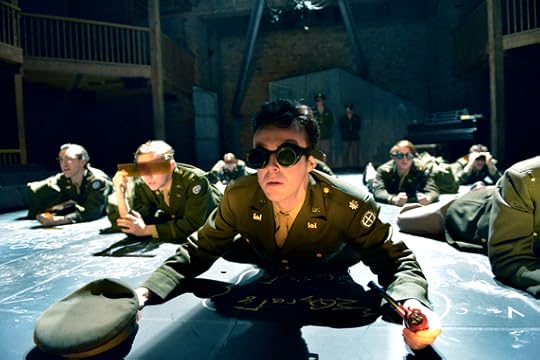
Worthy of all the accolades that have been thrown at it, Oppenheimer has transferred from the RSC to London for only a short time - a strictly limited run of only eight weeks. If you like your plays both fascinating and smart, it's a must-see.
Don't forget, you can read more about Tom Morton-Smith's experience in writing Oppenheimer in this blog he wrote for Huffington Post here.
Vaudeville Theatre, London to May 23, 2015
Image Credits:
1. Oppenheimer, 2015. L-R - Jack Holden (Robert Wilson) and Jamie Wilkes (Bob Serber). Photographer : Keith Pattison © RSC
2. Oppenheimer, 2015. Oliver Johnstone (Giovanni Rossi Lomanitz) and John Heffernan (J Robert Oppenheimer). Photographer : Keith Pattison © RSC
3. Oppenheimer, 2015. John Heffernan (J Robert Oppenheimer) in foreground. Photographer : Keith Pattison © RSC
4. Oppenheimer, 2015. Pictured: Company. Photographer : Keith Pattison © RSC
Published on April 03, 2015 08:04
March 29, 2015
Magnificent Obsessions: The Artist as Collector at Barbican Centre
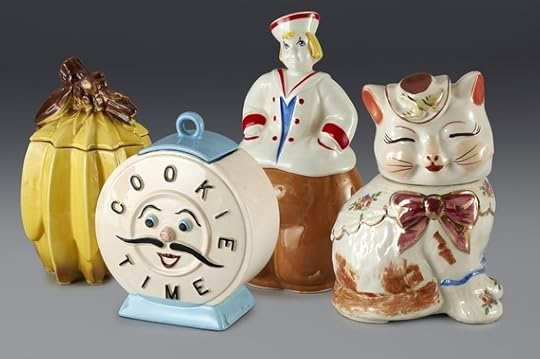
Magnificent Obsessions has a fascinating premise - to gain insight into the work of a number of post-war and contemporary artists from around the world through examination of their personal collections.
The Artist as Collector is the theme, and there are some wonderful pieces of art and artefacts on show including 17th century Japanese armour and some beautiful Indian rugs.
But then these are shown alongside what seems like the literal manifestation of eBay with Disney collectables, vintage Wish You Were Here postcards, tacky mini-Statue of Liberty statuettes made for tourists and themed salt and pepper sets. It's both extraordinary and bizarre.
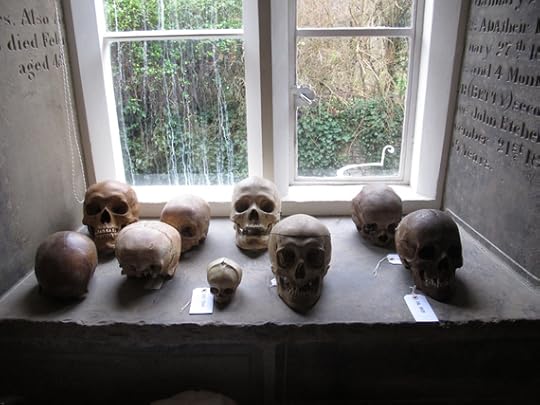
Yet all brought together they not only challenge the notion of value - who am I to judge what another person considers valuable? - but considering how often we try to split the art from the artists, Magnificent Obsessions makes for an interesting reversal.
The exhibition is compartmentalised into areas, with personal objects belonging to an artist shown alongside some of their work, encouraging us to link the artist and the collector within.
It's no surprise that Damien Hirst's section is filled with human skulls and taxidermy, the most impressive of which is a full size stuffed lion from Somalia dated c. 1880. Yet what is surprising is that Hirst is by no means the only artist with these interests.
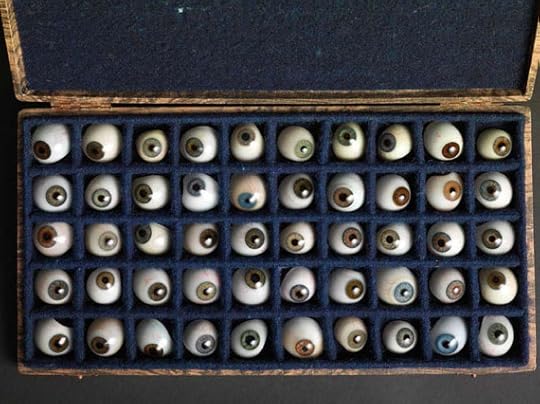
Hiroshi Sugimoto has an impressive collection of prosthetic human eyes and anatomical prints, as well as fossilised bird eggs and stingrays. Similarly, Peter Blake likes taxidermy, though his preference is more for those bizarre items from the Stromboli collection such as "mermaids" and six-legged lambs.
Elsewhere there's plenty of kitsch and, unsurprisingly, Andy Warhol leads the way here. The man was fixated with collecting cookie jars. You know the ones, cheap factory-made jars in the figure of large white rabbits, cats and pandas.
Showing these alongside some of the man's most famous work, such as his seminal silk-screened boxes of Brillo, Campbells and Heinz from 1964, makes sense. Yet what's most interesting is the observation that for Warhol, it was the possession, the act of ownership, which was of more interest to him then appreciating the object.
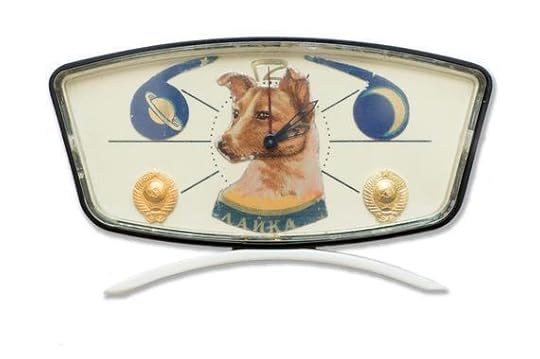
A lot of these jars were apparently found discarded around his New York townhouse after his death, still in their boxes and wrapping, or often still in the plastic bags he carried them home in, just discarded into corners of his home.
Similar obsessiveness you can see in Martin Parr's wonderful collection of Russian space dog memorabilia. I've never seen such an impressive collection of, well, junk with pictures of the dogs the Soviet Union rocketed into space during the Cold War emblazoned across badges, plaques, even clocks.
This attraction to items that might be undesirable really comes out in Jim Shaw's collection of thrift store art. There is an absence of technical achievement in these paintings yet Jim was drawn to that, attracted by their crude, dream-like surreal representations, whether it's the robot man about to take the nubile young woman, or the distorted cat's head.

The curation of the exhibition is excellent. Each area for each artist has been made into its own little world. As an entirety, the exhibition comes across as a collection of worlds within a world - each room having an entirely different vibe.
Vivid, bold colour palettes grab you in the areas for Dr Lakra, Howard Hodgkin and Pae White. For Dr Lakra, a whole wall is smothered with brightly coloured album covers from his personal record collection. Bands from his native Mexico are shown alongside international stars such as Billy Idol and 50 Cent. And with the music pumping through the speakers, there's such a passion and sense of life in this section.
And this all flows into his work of pin-up girls on vintage magazine covers where he has covered their exposed skin with some fine, intricate and exquisitely executed ink "tattoos". This blend of the old and the new is wonderful.

This commonality between collection and output could also be clearly seen in Howard Hodgkin's collection of Indian paintings, tapestries and rugs. The bold colours from his collection transferred beautifully into his The Studio of Jamini Roy. Yet it's interesting that Howard himself doesn't see such an explicit connection - "any resonance comes from the shared experience of India."
Similarly, the stunning impact of Pae White's bright washing line of collected Vera Newman textiles could be seen in her Cloud Cluster work - delicate cage-like forms made of colourful wires suspended overhead.
So if this is the case, it's interesting to consider what feeds what - do artists collect items to help them with their work, such as magazines, models and anatomical drawings? Or does their output reflect their own personal interest? The inspiration, I expect, flows both ways.

If you like your art exhibitions to be an orthodox collation of polished, final works then this show may not be for you. But if you're someone who is fascinated by the creative process, this exhibition gives an intriguing glimpse into the thoughts of an impressive range of artists.
Barbican Centre, London to May 25, 2015
Image Credits:
1. Cookie jars formerly in the collection of Andy Warhol. Image courtesy the Movado Group
2. Skulls on display in Damien Hirst's house, Courtesy Murderme Collection
3. 50 Glass Eyes, 1811-88 Collection of Hiroshi Sugimoto
4. Desk clock with Laika and planets, c.1950-60. Collection of Martin Parr © Martin Parr Collection/ Magnum Photos/ Rocket Gallery
5. Dr Lakra, Album covers from the collection of Dr Lakra. Photo by Dr Lakra
6. Howard Hodgkin, the Studio of Jamini Roy, 1976-79 Government Art Collection © Howard Hodgkin. Courtesy Gagosian Gallery © image: UK Government Art Collection
7. Scarves designed by Vera Neumann in the collection of Pae White. Photo by Justin Piperger. Copyright © VNIP Holdings, LLC. Reprinted by permission of VNIP Holdings, LLC.
Published on March 29, 2015 04:21



